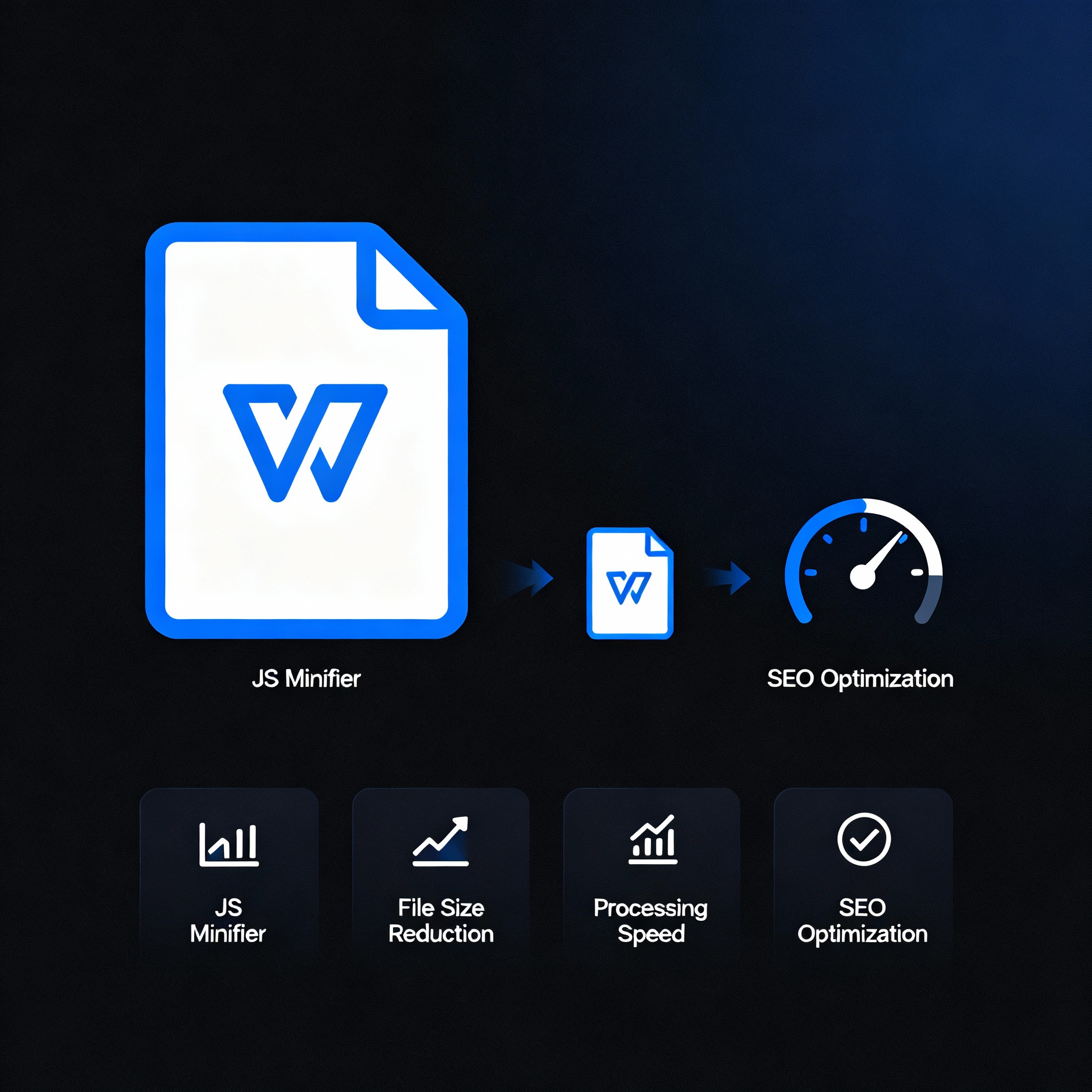
JS minifier
Created on 19 October, 2025 • Developer tools • 43 views • 2 minutes read
A JS (JavaScript) minifier is a critical tool in modern web development and SEO optimization.
A JS (JavaScript) minifier is a critical tool in modern web development and SEO optimization. It streamlines your site’s JavaScript files by removing unnecessary elements—like whitespace, comments, and redundant code—resulting in faster loading times, lower bandwidth usage, and improved user experience. Since page speed and efficiency are direct ranking factors for search engines, minifying JavaScript plays a vital role in SEO and overall site performance.
What Is a JavaScript (JS) Minifier?
Definition and Purpose
A JS minifier is a software tool or online utility designed to compress JavaScript files. By stripping away extra characters and shortening variable names without altering the code’s logic, minifiers cut file size by up to 80%. Tools such as JSMin, YUI Compressor, UglifyJS, and Google Closure Compiler are popular options, each offering unique features for various project sizes.
SEO Advantages of JavaScript Minification
Faster Load Times
- Minified JavaScript files are much smaller, enabling web pages to load rapidly—even on slower connections or mobile devices. Speed is a major SEO factor, as Google promotes fast-loading sites higher in SERPs.
Increased Crawl Efficiency
- Search engine crawlers process and index streamlined sites more efficiently. Lightweight JavaScript means search bots spend less time rendering code, which can lead to better indexation and improved ranking.
Reduced Bounce Rates
- A snappier site keeps users engaged longer, lowering bounce rates and boosting engagement—key behavioral signals for SEO.
Bandwidth Savings and Scalability
- Minified scripts reduce server loads and bandwidth consumption, making scaling to more users cost-effective and sustainable.
How JS Minifiers Work
- Input: Developers upload or paste their JavaScript code into a minifier.
- Processing: The tool removes whitespace, newlines, comments, and may even rename variables for maximum compression.dev
- Output: The result is a compact, production-ready file that’s functionally identical to the original but significantly smaller.
Top Tools and Integration
- Manual Tools: JSMin, YUI Compressor for smaller or ad-hoc tasks.
- Automated Tools: UglifyJS, Webpack, and Grunt integrate into your development pipeline for large or evolving projects.
- Online Utilities: Quick drag-and-drop or paste-and-minify services for simple, browser-based optimization.
Best Practices
- Always Backup: Keep original, unminified files for debugging and future maintenance.
- Automate in Deployments: Set up automated tools to minify JavaScript before each deployment, ensuring ongoing optimization.
- Monitor Page Speed: Regularly check site speed after updates to identify bottlenecks and further optimization opportunities.
Balancing Usability and Optimization
Although minified code is harder for humans to read, source maps enable developers to debug minified files efficiently, bridging the gap between performance and maintainability.
Conclusion
A JS minifier is an essential tool for website speed, user experience, and SEO. By shrinking file sizes, you foster faster loading, lower bounce rates, better indexation, and sustainable scalability—all crucial for ranking well on search engines and delighting users.
Popular posts
-
GIF to BMPImage Manipulation tools • 353 views
-
GIF to WEBPImage Manipulation tools • 256 views
-
GIF-to-PNGImage Manipulation tools • 190 views
-
SHA-3/512 generatorConverter tools • 152 views
-
GIF to JPGImage Manipulation tools • 122 views